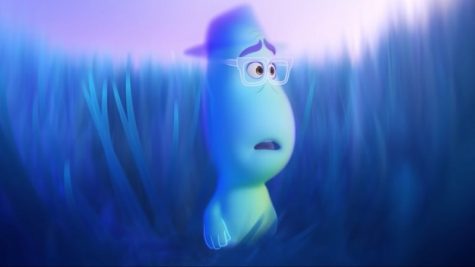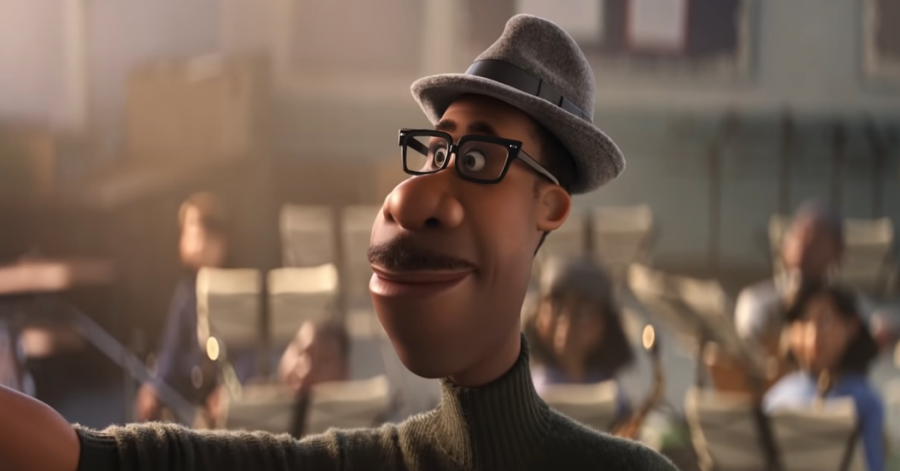Falling Down a Manhole: “Soul,” A Review
Picture this: you’re a struggling artist who has been working for years, and finally, you land your dream gig—only to be dunked into a manhole right after. Such is the plight of Soul’s main character, Joe Gardner. So, Soul. Pixar’s newest movie explores important themes surrounding mental health and the meaning of human existence, all with stunning animation and the first main Black protagonist ever in a Pixar movie. Soul’s storyline follows Joe Gardner, voiced by Jamie Foxx, through his struggles as a middle school band teacher with a passion for music and how he finally lands his dream gig. Well, the storyline follows that for the first five minutes. Joe soon falls into a manhole where he proceeds to die and find himself on a conveyor belt to the afterlife. He—after literally just landing his gig—is not ready to die and jumps into the lands of souls, where he meets unborn soul #22. Hijinks ensue.
Soul differs from other children’s films in that it goes far deeper than your average Disney or Dreamworks movie. While many other movies targeted towards younger audiences use singing slayin’ villains or banana memes (looking at you, Illumination) for easy entertainment, Pixar’s trademark is a deep, reflective style; their characters contemplate their own mortality in almost every film. Soul’s reflection touches on depression, social anxiety, grief, and of course, the aforementioned existence dilemma. But that’s the issue: Soul merely touches on all of these topics, never exploring them in-depth. Soul feels like a documentary made for fake therapists who want an online certification, devoting fifteen minutes or less to each niche of mental health. Covering each brief section provides breadth but lacks depth—if Pixar had chosen just one topic to focus on and dive deeper into, Soul could have had so much more of an emotional impact.

Soul was also the first Pixar film to star a Black character, and many members of the Black community have praised it for accurately representing (and not cartoonifying) Black culture, as discussed in this video. Pixar and Disney have underrepresented and misrepresented people of color for so long that it’s somewhat reassuring—and long overdue—to see them do their research to avoid racist portrayals (the bare minimum). Unfortunately, they did fall back on the POC body swap trope, which occurs when a character of color is human for the first five minutes of a movie but then relegated to the body of an animal—or in this case, a bioluminescent blob. This trope has a long history of racism since POC aren’t equated with being human, and it has leaked onto the main stage yet again. The Disney/Pixar aggregate has utilized the harmful POC body swap trope in the past, such as with The Princess and the Frog, The Emperor’s New Groove, and Brother Bear.
However, the underlying message of Soul is a good one: you don’t need to have a single “spark” that drives you for the entirety of your life. This take on individuals’ purposes in life is reassuring and fantastic to see in children’s media. It’s okay to enjoy life without having everything figured out; you don’t need to have a life-driving passion that also falls neatly into the boxes of a college application. 22 got their Earth Pass simply by watching others do the things they love, and that was enough. Ultimately, Soul preaches a message of reassurance and comfort in the face of ever-growing expectations, and it does it with a whole lot of soul.


